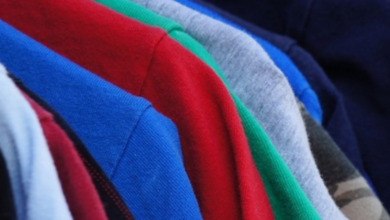The Ultimate Restaurant Menu Cheat Sheet
A restaurant menu is no big deal, right? It’s just a list of the food items that a restaurant offers its customers. Sure it is. Plus a whole lot more.
Before menus ever make it to the printer, restaurant owners hire menu engineers and consultants to bury super sneaky psychological tricks into the pretty pictures and mouth-watering descriptions for one reason only — to get you to spend more money.
Want to beat restaurants at their own game? Here’s your cheat sheet listing the sneakiest of sneaky tricks.
DOLLAR SIGNS
Sophisticated research tells restaurants to stop including dollars signs on their menus because a dollar sign — or even the word “dollar” spelled out instead — triggers negative feelings associated with paying. Both the sign and the word remind customers that they’re spending money. (Well, imagine that!)
FLOWERY LANGUAGE
Further research has revealed to restauranteurs that beautifully written descriptions of food choices appeal to unsuspecting customers. And that descriptive menu labels, in one impressive study, increased sales by 27%, as compared to food items without fabulously written descriptions.
Here’s an example: Instead of the menu listing simply “Crab Cakes,” naming them “Maryland-style crab cakes made by hand, with sweet jumbo crab meat, a touch of mayonnaise, our secret blend of seasonings and golden cracker crumbs for a rich, tender taste,” a customer cannot help but have a sensory experience just reading the description. That kind of flowery language gives customers satisfaction that prompts them to order, without much thought for what it will cost.
But wait. There’s more. If the menu description includes a brand name or two, such as Jack Daniel’s Sauce or Duke’s Mayonnaise, sales are set to increase like magic.
NOSTALGIC FAMILY CONNECTIONS
Oh, this is really sneaky! Research assures menu makers that when they can pull in the thought of a beloved family member — bam! — sales soar. Recognize the trick when you see Grandma’s Famous Meatloaf on a menu, or Aunt Millie’s Apple Cobbler.
AUTHENTICITY ASSURED
This is very common in ethnic restaurants. Instead of an Italian restaurant offering lasagna, for example, if the name is expanded to include a region or area of Italy, we assume a better outcome. Hey, it’s “Authentic Lasagna from Northern Italy,” which of course makes it worth at least a few more bucks.
BRING ON THE FONTS
When menu items are bolded, printed in a different color or enhanced with images, fancy fonts, photos, or — the big one — isolated in a separate box, they look like they’re a lot more special than the other cheeky items that are part of a boring list on the other side of the menu. If the “All-Star Perfect All-Beef Burger” gets its own box and print color, it’s got to be well worth the $12.95 price. Ha! That’s what they’re working so hard to convince you.
FOOD DECOYS
No kidding, that’s what they’re called by the experts-decoys to manipulate you into doing their bidding. Here’s how it works:
No kidding, that’s what they’re called by the experts — decoys to manipulate you into doing their bidding. Here’s how it works: You sit down, open the menu and lock eyeballs with the $11.95 patty melt, sans description. Just a patty melt for $12. You scoff. Ha! Not me. Then your eyes wander over to the boxed item with a photo of the world’s most perfect burger (titled accordingly) that makes you salivate. And it’s $16.95 complete with french fries and Jack Daniel’s dipping sauce.
No way! You know what they’re doing here. You make your decision. It’ll be the patty melt, no fries no sauce. And aren’t you clever? Well, not so fast, buckaroo. You just played into their hands and they’re laughing all the way to the bank! That burger that no one ever orders is a decoy. Priced at $17, it’s so ridiculous, customers laugh silently and then have no problem at all with a $12 patty melt.
READING PATTERNS
They’re called scanpaths, which define the way most people fix their eyes and the path they take while reading a menu. Menu engineering takes full advantage of the way we see things.
Statistically, they know we will order the first item to which our eyes are drawn upon opening the menu. We might read the whole thing, but it’s that No. 1 item that is so important to the restaurant’s bottom line.
This is the reason restaurants put the most profitable items in the upper-right corner. That is where the customer’s eyes go first. Beyond that, they know that we are most likely to remember items at the beginning of a list better. So, if we lay eyes on a list at first, it’s the first thing in that list that we are most likely to order. And guess what they choose to put in that spot? You got it!
There you go — your restaurant menu cheat sheet with all the tricks you need to know to beat restaurants at their own game.
As you notice these tricks, concentrate on them momentarily. Then go rogue by making up your own mind without feeling manipulated into buying a pricey patty melt or crab cakes, uh … I mean the delectable Maryland Style Crab Cakes.
Agree/Disagree with the author(s)? Let them know in the comments below and be heard by 10’s of thousands of CDN readers each day!



